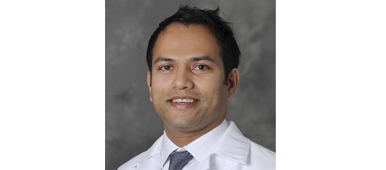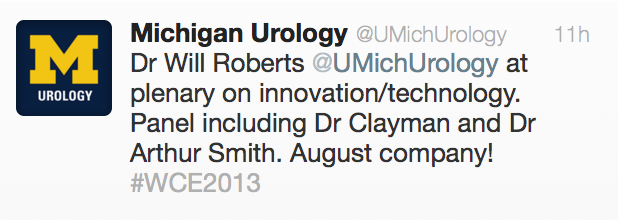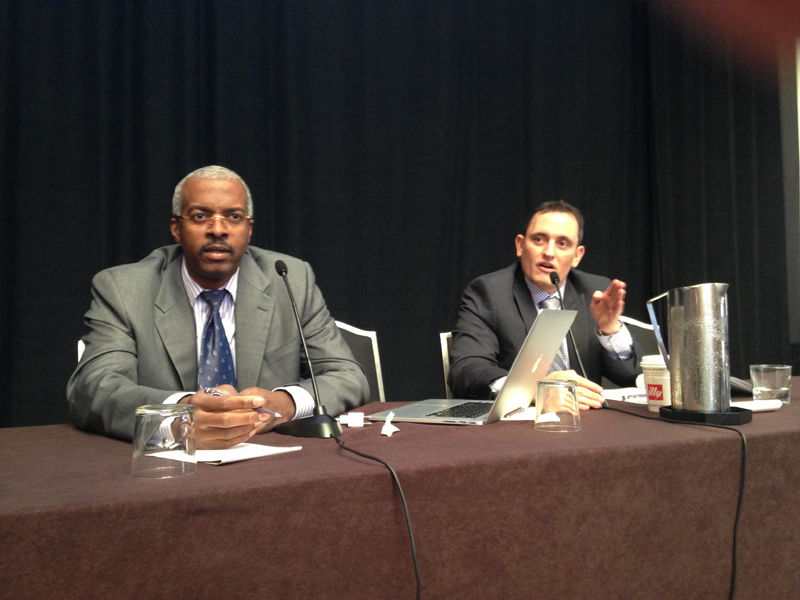Dusting vs. Fragmentation and other highlights from WCE 2013
I am in the beautiful city of New Orleans for this year’s World Congress of Endourology (#WCE2013). The city indeed has a charm and vibe that is different to any other in the U.S. You feel it in the air the moment you touch down. Of course, of late it gained much infamy as the epicenter of Hurricane Katrina. The taxi driver who took me to the Sheraton Hotel where the conference is being held, tells me everything is now fixed – new roads, stronger levees. Even the Superdome looks magnificent in the night sky (now rebranded with a giant Mercedes-Benz logo). A far cry from the devastation and havoc reeked on it during Hurricane Katrina.
The meeting began with an inauguration by the local hosts – Dr Benjamin Lee and Dr Raju Thomas from Tulane University. The tagline for this meeting is ‘innovate, cultivate, celebrate’. Dr Lee did a good job in reminding us that this conference really is a multicultural success. This year’s meeting has 1900 delegates from 93 countries with 300 faculty offering a diverse mix of plenary, poster and video sessions, live surgery, courses and industry sponsored events.
Dr Mahesh Desai, President of the Endourological Society, then welcomed us, and had the unusual honor of being introduced by a live Jazz band playing to the tune of “when the Saints go marching in”.
Dr Desai showed a picture of Raju Thomas performing retrograde renal surgery in Gujarat, India, in 1998, reminding us that this meeting is built on the hallmarks of globalization and spirit of collaboration. It is pleasing to know that the Endourology Society paid for 23 scholars from less developed nations to attend this meeting.
The plenary session kicked off with a debate on the merits of laparoscopic vs. robotic partial nephrectomy (PN) by Dr Inderbir Gill from USC and Dr Louis Kavoussi from LIJ, New York.
It was good to hear Dr Kavoussi elegantly state how important it is in medicine to assess new technologies with a critical eye. Science has progressed against this background of debate and discourse. Indeed, this week’s The Economist’s lead editorial is on the alarming lack of critical data analysis in modern science. Although I got the feeling the audience was on the side of robotic PN, it was nice to see a healthy debate on this subject by two titans of laparoscopic urology.
The plenary then moved on to a crowd favorite – difficult cases with scary videos! There was a nice presentation of a Weck clip that was stuck on a renal vein tributary during laparoscopic radical nephrectomy (LRN) with a panel discussion on how to get out of such tricky situations. Dr Rimington from the UK, discussed a case of postoperative bleeding after laparoscopic nephroureterectomy and the difficulty in deciding where to make an incision – where was the bleeding coming from: upper or lower tract? (The patient was too unstable to have a CT scan). Dr Landman from UC Irvine presented his personal agonies in the management of a patient with persistent chylous leak after LRN which failed conservative management. He reluctantly explored the patient laparoscopically many weeks later only to find a leaking lymphatic that was clipped and dealt with. I found these cases and this type of session extremely informative. One gets to hear competing arguments for case management and learn a great deal, in an environment that may be safer than the live case demonstration (LCD). The latter has been the subject of much interest in a recent BJUI blog. @JYLeeUroSMH from University of Toronto also thought so.
The Keynote Imaging Lecture, by Dr Joseph Liao from Stanford University, was on optimal imaging technologies for urothelial carcinoma, and in particular the role of confocal endomicroscopy – a technique where images reminiscent of H&E slides are produced using small probes in contact with the urothelial mucosa. Although in its infancy, it is able to distinguish between low and high-grade lesions and provide a diagnostic imaging atlas.
Another highlight of the opening plenary was a debate on the role of renal biopsy for small renal masses. Chaired by Adrian Joyce from the UK, the pro-camp was presented by Dr Stuart Wolf, from @UMichUrology and Chairman of the AUA Guidelines Committee. The anti-camp was presented by Jens Rassweiler from Germany. Interesting facts: 25% of renal masses are benign, and of those that are malignant, 25% are indolent. Dr Wolf stated the seeding rate from a biopsy was 0.01% and the major complication rate <1%. A recent study from the University of Michigan found the sensitivity and specificity to be 96% and 100% respectively. Dr Wolf’s feeling was that it helped avoid intervention in benign or non-aggressiveness cases, and even change the treatment plan in aggressive cases (i.e. do a radical nephrectomy, not a PN). Dr Rassweiler’s thoughts were that modern day imaging was so good at diagnosing malignancy, the endpoint being surgical excision did not change with a biopsy. Mr Joyce put the outcome of the debate to the audience and the clap-o-meter favored ‘no biopsy’. I wonder what the clap-o-meter will sound like in 5 years time?
There was a presentation by Duke Herrell on imaging guidelines from the AUA for the follow-up of localized RCC. This is essential reading and can be viewed online. Finally, to end the first day’s plenary, Prof Ralph Clayman spoke about the art of innovation and his journey with laparoscopic nephrectomy. He identified six aspects that had to be fulfilled in order for a new technique to be successful: there had to be a desired future, purpose and urgency. Practically there had to be time/energy, in an appropriate environment with stewardship. It’s amazing to know that the first LRN was performed in an 85 year old patient!
Another feature of this conference has been the “unedited videos session”. I went to one on flexible ureterorenoscopy chaired by Dr Preminger.
While the video of the case is played, both the surgeon and panel are able to have an extensive discussion on the nuances of technique. In my opinion, this is a far safer environment than the LCD. Also of value have been the various industry sponsored practical courses. One on ureteroscopy by Dr Timothy Averch @Tdave from University of Pittsburgh, was standing room only.
Other highlights of the conference included:
A unique demonstration of the use of an iPad to help plan percutaneous access by Dr Rassweiler.
Dr Stephen Nakada introduced a new quality of life instrument for stone patients – the Wisconsin Stone QoL tool.
A fantastic debate on “Dusting” vs. “Fragmentation” by Dr Breda from Spain and Dr Traxer from France. Dr Olivier Traxer is known for his high quality HD videos and he did not disappoint in showing great clips of endoscopic stone surgery. Take home message: Dusting settings are usually kept at 0.2 J x 20-30 Hz. Fragmentation is better with lower frequency and higher energy (i.e. 0.8 J x 6 Hz). For large stones, dust first then fragment.
Watching a live robotic partial nephrectomy by Dr Ariel Shalhav from the University of Chicago.
A great overview on the latest developments in RARP by Prof Francesco Montorsi @F_Montorsi.
Another session dedicated to renal mass biopsy (get the hint?) – and an excellent demonstration by Dr Landman on how urologists can do renal biopsies themselves in the clinic using ultrasound.
A session on innovation, and a beginners guide to patents; Dr William Roberts from @UmichUrology spoke on how to secure funding with venture capitalists. He is part of a team behind a new medical device using “histotripsy”, a noninvasive image-guided therapeutic form of ultrasound.
Video session on “nightmares” in robotic urology: want to know what a rectal injury at RARP looks like? Or what a Weck clip applied to an obturator nerve looks like? And how to deal with these complications?
As Elspeth McDougall from USC Irvine, said during the session on simulation and training – “A smart man learns form his mistakes, but a wise man learns from the mistakes of others”.
So on that note: I feel wiser to have attended this conference. It indeed was innovate, cultivate and celebrate!
Khurshid Ghani
Clinical Assistant Professor, University of Michigan, Ann Arbor, MI
@peepeeDoctor













